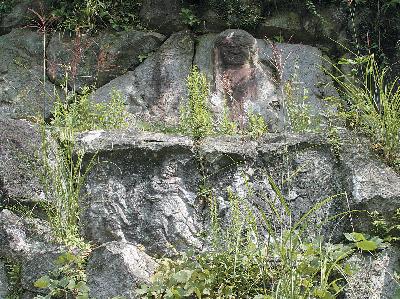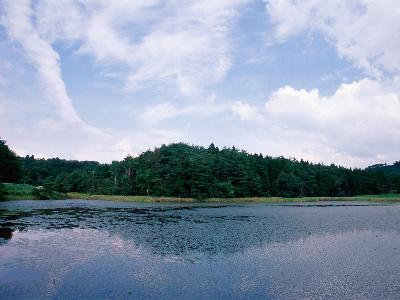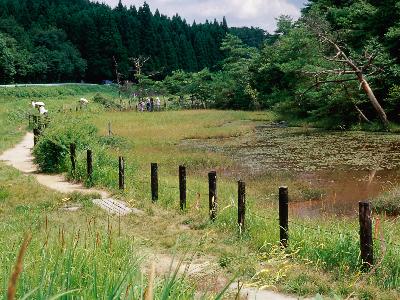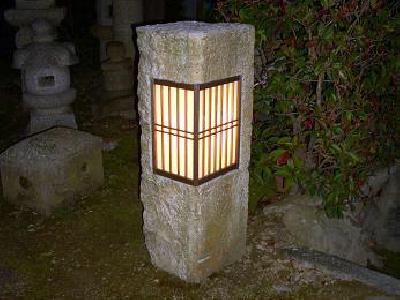|
In Naramoto, Oita Prefecture, there is a granite rockface with carvings representative of the Muromachi period.
There are 45 Buddhist figures in all, including Fudo, carved on a rockface measuring 4.5m (L) × 40m (W) wall. Other than Fudo (Fudō-Myōō, Kongaradoji and Seitakadoji) and Yakushisanzon (Bhaisajyaguru, Nikko Bodhisattva, Gekko Bodhisattva), there are sculptures of the Twelve Heavenly Generals, Nio, Jizo Bodhisattva and a mandala that represents the world of Buddhism.
On the upper right hand side of the Fudō-Myōō, it is signed that the rock carvings were made in 1428. However it is hard to believe that all the carvings were made simultaneously, because the lower part seems to be older than the upper ones. In 1957, these granite carvings were designated as an important cultural asset of the prefecture.
There are 45 Buddhist figures in all, including Fudo, carved on a rockface measuring 4.5m (L) × 40m (W) wall. Other than Fudo (Fudō-Myōō, Kongaradoji and Seitakadoji) and Yakushisanzon (Bhaisajyaguru, Nikko Bodhisattva, Gekko Bodhisattva), there are sculptures of the Twelve Heavenly Generals, Nio, Jizo Bodhisattva and a mandala that represents the world of Buddhism.
On the upper right hand side of the Fudō-Myōō, it is signed that the rock carvings were made in 1428. However it is hard to believe that all the carvings were made simultaneously, because the lower part seems to be older than the upper ones. In 1957, these granite carvings were designated as an important cultural asset of the prefecture.
| [+ADDRESS] | 
|















